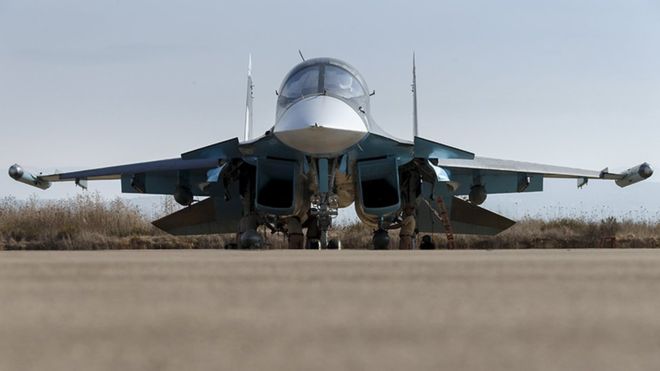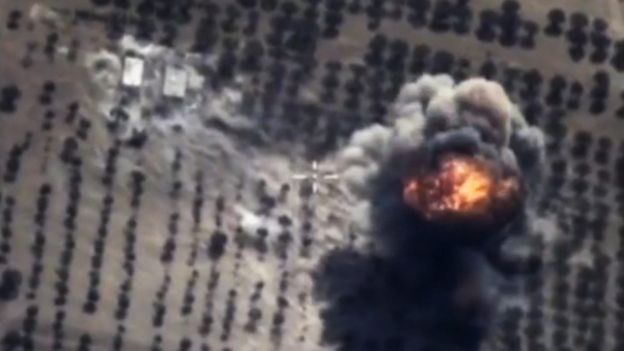Russia’s Syria intervention: One month in

The deployment of a Russian strike force of 34 combat jets and 21 helicopters showed how billions invested in the armed forces by President Vladimir Putin had paid off. Within days of arriving they were flying attack missions, and have now clocked up something like 1,000 of them.
President Putin wanted to show the world that he would bring a zeal to the battle against militancy in Syria that had been sorely lacking under the American-led coalition.
So, whereas the US-led air forces have averaged around six strikes per day during the past year (actually less during this last month) the Russians started with eight, were soon up to a couple of dozen, and have mounted as many as 94 strikes in a single day.
They've taken advantage of the close proximity of their Syrian base to the targets (sometimes just ten minutes' flying time away) to mount two or three missions per day with some aircraft, while a US jet travelling from the Gulf, refuelling multiple times, might fly two or three operational missions in a week.
Having advisers with the Syrian Army on its various fronts, the Russians have had no shortage of targets to prosecute (not initially anyway) because they have so many eyes in place.
So Russia has rained down destruction, but to what end?
American officials' analysis and independent journalists, like the Bellingcat investigative website, come up with similar answers: that more than 90% of the bombs have been dropped in places held by groups other than the so-called Islamic State (IS). Of 60 Russian Defence Ministry strike videos with geo-location data examined by Bellingcat, only one was in an area where IS operates.
Russian officials have themselves been inconsistent about targeting. President Putin last week described the distinction between "moderate and immoderate" terrorists as, "playing with words".
While foreign minister Sergei Lavrov has, at times, suggested that elements of the Free Syrian Army (a loose-knit association of groups, many of which have been hit by Russian air attacks) could join in peace talks.
What an examination of the places actually hit shows is that they are heavily clustered around areas where the Syrian regime has sought to reverse recent losses and has, for the past fortnight, been launching ground offensives.
Политика конфиденциальности | Правила пользования сайтом








